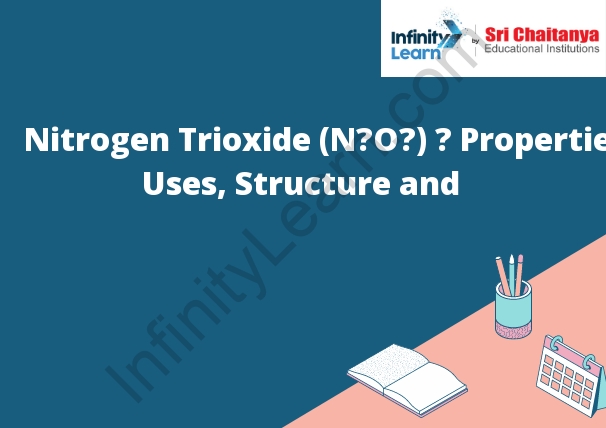Table of Contents
What is Nitrogen Trioxide?
Nitrogen trioxide is an unstable compound that is made up of one nitrogen atom and three oxygen atoms. It is a gas that is colorless and has a pungent odor. It is very reactive and can react with many other compounds.

Properties of Nitrogen Trioxide N2O3
Nitrogen trioxide is a molecule made up of one nitrogen atom and three oxygen atoms. It is a pale yellow gas with a pungent, acrid odor. It is very soluble in water, and it is a strong oxidizing agent. It reacts with many substances, including metals, to produce oxides. It is also a powerful greenhouse gas, and it contributes to climate change.
Uses of Nitrogen Trioxide
Nitrogen trioxide is used as a precursor to nitric acid, a strong acid that is used in many industrial processes. It is also used as a oxidizing agent in some chemical reactions.
Structure of Nitrogen Trioxide
Nitrogen trioxide is a molecule made up of one nitrogen atom and three oxygen atoms. The nitrogen atom is in the center and the oxygen atoms are around it.
Handling and Storage
Handle with care. Store in a cool, dry place.
Personal Protection and Exposure Control
When working with or near potentially infectious materials, personal protective equipment (PPE) must be worn. PPE includes gloves, gowns, masks, and eye protection.
Exposure Control Plan
The exposure control plan is a document that outlines the specific measures that will be taken to protect workers from exposure to infectious agents. The exposure control plan must be reviewed and updated at least annually.
Fire Fighting Measures
Extinguish with water, foam, CO 2 , or dry chemical.
Health Hazards
Inhalation: May cause respiratory tract irritation.
Ingestion: May cause gastrointestinal tract irritation.
Skin: May cause skin irritation.
Eyes: May cause eye irritation.





